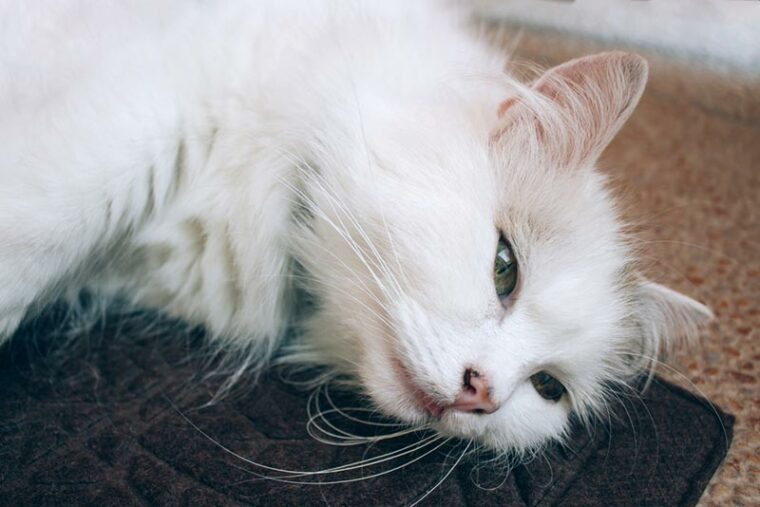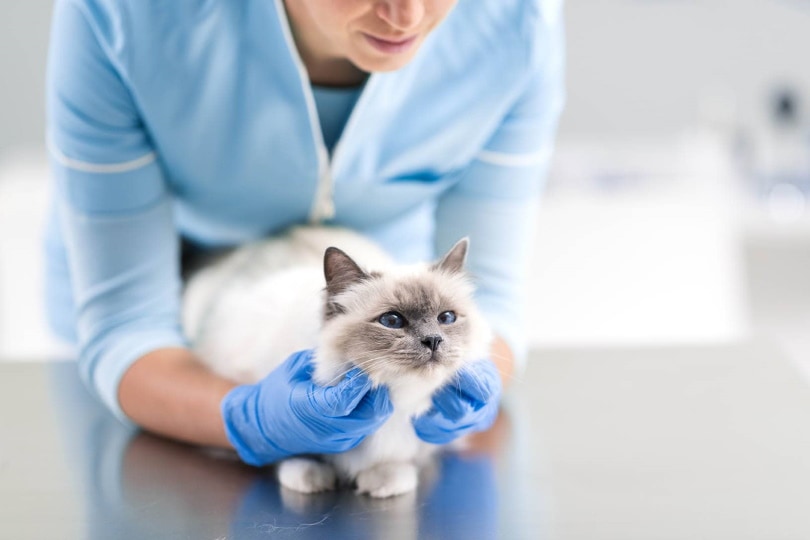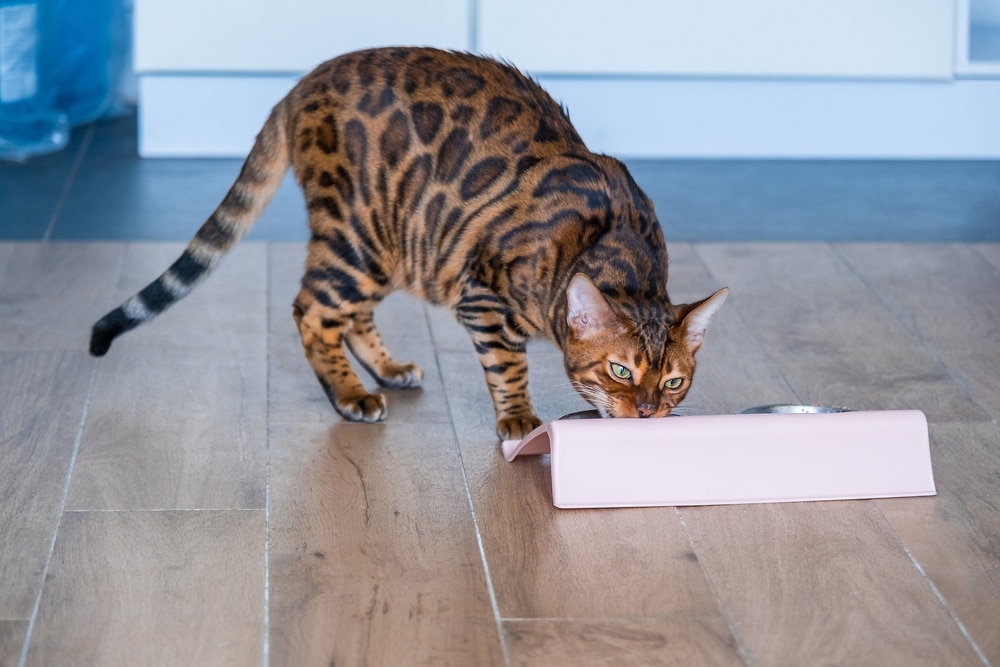
Click to Skip Ahead
Feline aortic thromboembolism, or FATE, is a serious condition in which a blood clot travels into and lodges in part of the aorta.
The prevalence of FATE is between .3% to .6%1, and between 12% to 20%2 of cats with feline hypertrophic cardiomyopathy (HCM) will develop FATE. Occurrences of FATE can lead to critical or fatal consequences, so it’s especially important for cat owners to be well-informed and prepared for any potential incidents.
What Causes Feline Aortic Thromboembolism (FATE) in Cats?
FATE most commonly occurs in cats with an enlarged left atrium in their heart, but cats with any form of hypertrophic cardiomyopathy are at risk of FATE. Hypertrophic cardiomyopathy is a condition in which the walls of a cat’s heart thicken and decrease the heart’s efficiency in pumping blood throughout the body. Hypertrophic cardiomyopathy, congestive heart failure, or other congenital heart conditions such as mitral stenosis can lead to the formation of blood clots, which could then cause FATE. So, FATE is most commonly known as a secondary issue that occurs in cats that already have heart disease.
Certain cat breeds are more susceptible to developing FATE. Abyssinians, Birmans, and Ragdolls have a higher risk of FATE than other cat breeds. Diagnoses of FATE seem to be more prevalent in male cats and adult and senior cats between the ages of 8-12 years.

Signs and Symptoms of FATE in Cats
If your cat has been diagnosed with heart disease or hypertrophic cardiomyopathy, it’s best to be on the lookout for signs of FATE. One of the most common signs of FATE is sudden paralysis and pain in your cat’s hind legs. Cats may vocalize their pain and also may have difficulty breathing.
As the blood clot prevents oxygen from traveling throughout the body adequately, your cat’s body temperature in affected regions may grow colder, and its footpads may start to grow pale or bluish. Your cat may also have heart murmurs or an irregular heartbeat.
Treatments for FATE
Cats exhibiting symptoms of FATE should be taken to the veterinarian immediately for treatment. While the prognosis varies, FATE can sometimes lead to devastating and fatal consequences. So, it’s important to act quickly, as time is of the essence.
Veterinarians will work to initiate oxygen therapy and stabilize the cat’s bodily functions. They’ll also look into further treatment for any affected limbs. Options include physical therapy on affected limbs and the prescription of anticoagulant medication. However, sometimes, there is no effective treatment for the condition.

Prognosis for FATE
Unfortunately, the prognosis for FATE is generally poor. Cats that have had a case of FATE are more susceptible to blood clots forming again in the future. Full recovery of the affected limbs is possible, but it can take days to weeks for cats to heal. Cats that have experienced a FATE episode also don’t have a very high survival rate.
Most cats will need to be on some sort of anti-blood clotting medication or therapy for the rest of their lives. While there isn’t a direct way to treat blood clots, cat owners can help their cats manage hypertrophic cardiomyopathy or other underlying heart diseases to reduce the risk of recurring blood clot formations.
Is FATE Preventable?
One of the most frustrating things about FATE is that there’s no clear or concrete way to predict the formation of blood clots. Heart disease is a risk factor of FATE, but some cats with heart disease may never have blood clots. In some rare cases, cats without heart disease can still experience FATE.
Ensuring that your cat lives a healthy and active lifestyle can reduce the risk of heart disease. A healthy, well-proportioned diet can keep cats from becoming overweight or obese. Obesity, diabetes, and heart disease all have links with each other in other species, so providing a high-quality diet and plenty of exercise may help keep all these issues at bay.

Conclusion
FATE is a serious condition that requires immediate treatment. While there’s no known cure for FATE and hypertrophic cardiomyopathy, you can still do several things to reduce the risk of FATE. Making proper lifestyle choices for your cat may help prevent blood clotting. If you have a cat with heart disease, make sure to consult with your veterinarian for treatment and medications that help prevent blood clots and lower the risk of FATE.
Related Reads:
Featured Image Credit: Iryna Mylinska, Shutterstock







